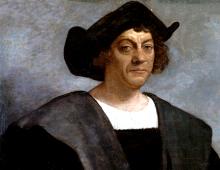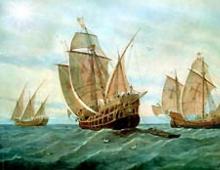Kronverksky bridge of the Peter and Paul Fortress. Where is the Kronverk bridge
The Kronverk bridge is named after the strait of the same name that it crosses. The ferry connects Zayachy Island, on which the Peter and Paul Fortress is located, with the main part of St. Petersburg. Informally, the bridge is called "humped" because of the sharp bend in the middle.
Construction history
In 1875, the Second Fortress Bridge stood on the site of the Kronverksky Bridge. The construction of a new crossing began in 1938, when it was necessary to expand the former "Gosnardomovsky" garden (the current Aleksandrovsky).

The project of the new bridge was designed by engineer Petr Stepnov. The structure consisted of five wooden spans. The central span was raised above the canal to a considerable height so that dredges and small boats could pass underneath. The width of the bridge was 8.9 m, length - 58 m. Architecturally, the crossing resembled bridges of the 18-19 centuries. and successfully fit into the historical part of the city, complementing the appearance Peter and Paul Fortress.
In 1947, the bridge was repaired, having strengthened the structure with metal beams, and traffic on the roadway was allowed for automobile and horse-drawn vehicles. In 1977, repair work was again carried out: wooden abutments, flooring and railings were replaced, sidewalks were separated.

The next urgent repair was carried out in 2015, when the bridge was declared emergency as a result of rotting of wooden elements by 79%. The Committee for the Protection of Cultural Monuments put forward a requirement to preserve the historical appearance of the crossing, so the material, geometric parameters and architectural forms were preserved during the repair. In 2016, the bridge was reopened to traffic.
Kronverk bridge today

The girder bridge consists of five spans mounted on wooden supports on pile foundations. The carriageway and sidewalks are covered with wooden beams, the railings are also made of wood. The length of the bridge remains unchanged - 58 m, width - 8 m. The crossing is open for pedestrians, as well as for vehicles with a weight limit of less than 7 tons per axle.

During the tourist season, 250 sightseeing buses bringing guests of the city to the Peter and Paul Fortress. On holidays and public events, trucks deliver sand and equipment to Zayachy Island, and cars regularly go to the Mint. Due to heavy loads, the wooden supports of the Kronverk crossing require replacement every 5 years, and the flooring and railings - every 3 years. After a major overhaul in 2015-16. City authorities are closely monitoring the state of the crossing.
This bridge, which is sixty meters long and nine meters wide, unites the shores of the Petrogradsky and Zayachiy Islands in the lower part of the Kronverk Strait (Kronverk is one of the additional bastions that abound in the Peter and Paul Fortress). For the first time, a bridge crossing was built here in 1876 - then the bridge was called the Second Fortress.
Created instead of it in 1939 according to the project (author P.P. Stepnov), the current Kronverk Bridge does not violate the original harmony of the fortifications of Petropavlovka, perfectly fitting into the panorama of the surrounding landscape - in its own way appearance it is indistinguishable from the old wooden St. Petersburg bridges of the eighteenth and nineteenth centuries.
Address: St. Petersburg, Kronverksky bridge.
The nearest metro station is Gorkovskaya.
Location map:
JavaScript must be enabled in order for you to use Google Maps.
However, it seems JavaScript is either disabled or not supported by your browser.
To view Google Maps, enable JavaScript by changing your browser options, and then try again.
The “humpbacked” Kronverksky Bridge serves as a link between Zayachy Island and Mytinskaya Embankment, close to Kronverksky Prospekt, and crosses the Kronverksky Strait, from which it derives its name.
This crossing was built in 1938, on the site of the bridge that stood here since 1875, known as the 2nd Fortress. The construction of a new bridge was due to the need for a crossing during the expansion of the "Gosnardomovsky" garden. The construction of the new Kronverksky bridge was carried out according to the project developed by the railway engineer P.P. Stepnov. The erected bridge has become a five-span wooden bridge structure, the spans of which are covered by metal beams. The sufficiently large height of the middle span of this crossing, necessary for the passage of dredgers, was determined by the steepness of the bend of its surface, which is why the Kronverk bridge was not popular among the people. official name- Hunchbacked. The width of the Gorbaty - Kronverksky bridge between the railings was 8.9 meters, and the length along the deck was 58 meters.

The overhaul of this bridge structure was carried out in 1947, after which this bridge became capable of passing auto-drawn vehicles. So, having served for more than 30 years, this crossing was again subjected to repair and reconstruction, during which the length of the Kronverk bridge to the back wall of its abutments became 57.5 meters, and the width between the railings was 8.8 meters.

It should be noted that the Kronverksky bridge, which has a wooden flooring and railing, is similar to the old wooden St. Petersburg bridges of the 18-19th centuries, and therefore fits very harmoniously into architectural ensemble Peter and Paul Fortress.
The Kronverk Strait is a natural "first line of defense". A curvilinear river duct washes Zayachy Island, on which the fortress is located, from its northwestern part, separating it from Petrogradsky Island. Opposite the Alekseevsky ravelin, the humpbacked Kronverksky bridge rises above the water barrier.
This is a modern bridge, which is only 80 years old - all its nine spans are covered with metal beams and are able to withstand the movement of vehicles weighing up to 7 tons per axle. At the same time, the structure, 57.5 meters long and 8.8 meters wide (according to the St. Petersburg State Budgetary Institution Mostotrest) - in its shape, pattern of the fence made of wooden beams, and boardwalk - is very similar to the building of the 18th century and blends perfectly with the surrounding ensemble.
Kronverk Bridge, as you might guess, got its name from the Kronverk Strait, as well as Kronverkskaya Embankment and Kronverksky prospect describing an arcuate trajectory around the former glacis of the Peter and Paul Fortress. Almost until the middle of the 19th century, this territory on the Petrograd side was a deaf, overgrown wasteland, although the project for creating a park zone in this place had long been developed by the architect A. A. Menelas on the instructions of Alexander I.
Thanks to the initiative of the Minister of Finance E.F. Kankrin, who often visited the Mint in the Peter and Paul Fortress, and his active participation, one of the first public parks in the city, called Aleksandrovsky, appeared here in the 1840s. For the convenience of communication across the channel in 1875, two bridges were thrown - the 1st Fortress and the 2nd Fortress Bridge. Unlike the one built across the strait back in the 18th century and still existing, both crossings were lost in 1914.
In 1924, the Peter and Paul Fortress turned into a museum. And in the 1930s, they began to actively improve the former Alexander Park, renamed the garden of the Gosnardom (the former People's House), where, in addition to the usual park entertainment, the famous roller coaster attraction was installed.
As part of these transformations, in 1938, a little downstream from the place where the 2nd Fortress Bridge once stood, a new crossing was built according to the project of engineer P.P. Stepnov. Since the only bridge across the strait that existed at that time, Ioannovsky, was and remains pedestrian, a road bridge was simply necessary here.
And in our time, the Kronverk bridge carries a heavy load, ensuring the promotion of daily flows of sightseeing buses, transportation of goods for events, travel cars heading to the Mint. The bridge piers are repaired every five years, and the decking and fencing are renewed every three years.
Where is the Kronverk bridge
Object of historical and cultural heritage The Kronverksky bridge, thrown across the strait of the same name, connects Zayachy Island with the Petrogradskaya side (goes onto Mytninskaya embankment). A lively a tourist route, because the bridge leads to the Peter and Paul Fortress.
On the opposite side is the Alexander Park with its famous sights: the Leningrad Zoo, the Music Hall. Pleasure boats start from the pier next to the bridge for a tour of the waterways of St. Petersburg.
Kronverk bridge
The bridge is located in the lower reaches of the channel. It connects Zayachiy and Petrogradsky islands. The bridge was named after Kronverk, an auxiliary fortification of the Peter and Paul Fortress. The bridge is wooden with metal beams. It was built in 1938 according to the project of engineer P.P. Stepanov. The bridge is 58 m long and 9 m wide.
From the book Legendary streets of St. Petersburg author Erofeev Alexey Dmitrievich From the book Book of Changes. The fate of Petersburg toponymy in urban folklore. author Sindalovsky Naum AlexandrovichKronverksky Prospekt 1798. Modern Kronverksky Prospekt was formed in the middle of the 18th century from two passages, of which only one had an official name - Horse. The other, encircling the Peter and Paul Fortress, did not have a formal name, but in common parlance
From the book Streets of the Petrograd side. houses and people author Privalov Valentin DmitrievichKronverksky Prospekt It runs from Kuibyshev Street to Mytninskaya Embankment, skirting Aleksandrovsky Park. Length - 1748 meters. It was supposed to be called Kronverkskaya Street as early as 1738. On the plan of 1753 it was designated as Kronverkskaya Street. In 1762 also - Kronverkskaya street. But
author Antonov Boris IvanovichVarshavsky Bridge The bridge is located in the alignment of Izmailovsky Prospekt. The length of the bridge is 38.2 m, width - 30.6 m. The name of the bridge comes from the nearby Varshavsky railway station. railways was built
From the book Bridges of St. Petersburg author Antonov Boris IvanovichBaltic Bridge The bridge is located opposite the Baltic Station. The length of the bridge is 33 m, the width is 4.5 m. The name of the bridge comes from the Baltic Station.
From the book Bridges of St. Petersburg author Antonov Boris IvanovichTarakanovsky Bridge The pedestrian bridge is located in the alignment of Tsiolkovsky Street. In 1907–1908 it was partially filled up, and a street was formed between the embankments of the Fontanka and the Obvodny Canal,
From the book Bridges of St. Petersburg author Antonov Boris IvanovichBorisov Bridge Unites the industrial zones of the left and right banks of the Obvodny Canal. The metal bridge was built in 1989 according to the design of engineer A.I. Feldman and architect V.M. Ivanov. Bridge length 33.1 m, width -
From the book Bridges of St. Petersburg author Antonov Boris IvanovichMatveev Bridge The bridge is located on the left bank of the Moika. The bridge is 27.1 m long and 9.78 m wide. It was named in memory of Commissar S. M. Matveev, who was killed in 1918 on the Eastern Front. The bridge was built in 1782–1787. during the construction of granite embankments of the Kryukov Canal. He was wooden
From the book Bridges of St. Petersburg author Antonov Boris IvanovichDekabristov Bridge The bridge is located in the alignment of Dekabristov Street. The bridge is 29 m long and 23.3 m wide. The name of the bridge was given in memory of the Decembrist uprising on Senate Square on December 14, 1825. a three-span bridge was built here with supports made of rubble
From the book Bridges of St. Petersburg author Antonov Boris IvanovichTorgovy Bridge Torgovy MostThe bridge connects Teatralnaya Square with Soyuz Pechatnikov Street (former Torgovaya Street). The length of the bridge is 26.7 m, the width is 10.5 m.
From the book Bridges of St. Petersburg author Antonov Boris IvanovichKashin Bridge The bridge is located in the alignment of Rimsky-Korsakov Avenue. The bridge is 23.85 m long and 16 m wide. The first permanent bridge with a wooden span was built here in 1805–1810. In 1839–1840 The Kashin bridge was rebuilt again, and it became a three-span, on stone,
From the book Bridges of St. Petersburg author Antonov Boris IvanovichAdjacent Bridge The bridge is located on the embankment of the Fontanka River. The length of the bridge is 25.9 m, width - 15 m. The name of the bridge is associated with its location. In 1800–1810. the wooden bridge was replaced by a permanent, three-span, on stone, granite-lined supports with a wooden beam
From the book Bridges of St. Petersburg author Antonov Boris IvanovichMatisov Bridge The bridge connects the left bank of the Moika River with Matisov Island. The length of the bridge is 39.7 m, width - 10.5 m. It was named after the miller Matis, who had his own settlement on the island, built on a site donated to him by Peter I for reconnaissance of the actions of the Swedish troops
From the book Bridges of St. Petersburg author Antonov Boris IvanovichBanny Bridge The bridge is located opposite Dekabristov Street. The length of the bridge is 35 m, the width is 15 m.
From the book Bridges of St. Petersburg author Antonov Boris IvanovichBerdov Bridge The bridge connects Matisov Island and Myasnaya Street. The name of the bridge was given by the name of the founder of the Iron Foundry on Matisov Island in the 1780s. Charles Byrd. The bridge is pedestrian. It connected Myasnaya Street with the entrance of the plant and was called at first Chugunny, then
From the book Bridges of St. Petersburg author Antonov Boris IvanovichUralsky Bridge Uralsky BridgeConnects Vasilyevsky Island and the island of the Decembrists in the alignment of the Ural street. Bridge length 24.6 m; width - 31 m. The name leads from Uralskaya Street, which from 1836 to 1859 was called Wine Lane. In 1829 a wooden bridge was built here,







